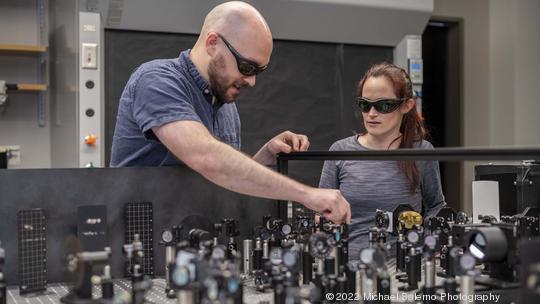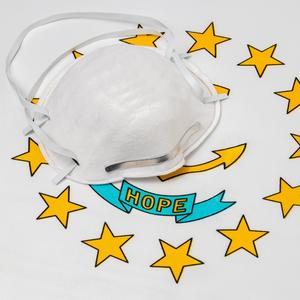
One of the great ironies of the Earth is that while 71% of the planet's surface is water, only 3.5% of that water is drinkable. Moving into the future, drinkable water is only expected to grow more scarce. That's a big reason researchers around the globe are studying new techniques for producing clean water.
Recently, a team of University of Rhode Island researchers made a breakthrough discovery that could supercharge a relatively new technique that uses an iron compound to clean water. The ferrate treatment needs to be combined with other compounds or light energy to work, and when it's used, it creates fewer toxic byproducts than such chemicals as chlorine.
According to Dugan Hayes, an assistant professor of chemistry at URI and the study’s author, the practical implication of the study with respect to water-treatment applications is that it may be possible to activate ferrate using longer wavelength UV light and possibly even visible light.
The findings were recently published in the Journal of the American Chemical Society.
Cali Antolini, a Ph.D. student in Hayes’ lab, led experiments using transient absorption spectroscopy, a technique she had used previously at the U.S. Department of Energy student-research program at the Argonne National Laboratory’s Advanced Photon Source in Chicago. By using an ultra-fast laser and X-ray pulses, the URI team revealed new details about the chemical reaction that occurs when ferrate is exposed to visible and ultraviolet light.
"Although we haven't tested this idea yet, our results suggest it should be possible," Hayes said.
By activating the iron ferrate with a "kick" with UV light, researchers were able to create an even more reactive iron species which then started stealing electrons from everything around it. Before this new study, Hayes said, it wasn’t known just how much energy was required to produce Fe(V), and in what quantities it could be produced.
"The ferrate can grab hydrogen atoms from water to form hydroxyl radicals that then chew through the bonds in toxic organic compounds, or it can grab electrons from those toxic compounds directly," Hayes explained.
Ferrate can also be stored on the shelf indefinitely until it is needed, which could be a boon for smaller-scale water treatment facilities.
Hayes said as research continues at URI, his team wants to see how far they can push into the visible part of the electromagnetic spectrum from the UV and still maintain good oxidation activity.
"We're also hoping to use similar techniques to the ones reported in this paper to actually watch activated ferrate destroy toxic organic compounds in water in real time," he said. "From a completely different angle, our group is interested in how we can use light to manipulate the electrons in this system, and we're using a variety of laser- and X-ray–based techniques to probe this further."
Ferrate-based purification systems: 'Promising option'
Hayes said the electrons in ferrate have certain properties that could make them useful in quantum information science, but, he added, "there is still much to be learned before we get to that."
Joseph Goodwill, an assistant professor of civil and environmental engineering at URI and a study coauthor, said ferrate-based purification systems are a promising option for smaller systems, where expensive and elaborate ozone systems aren’t practical.
Goodwill said the burgeoning tech also has the potential to decrease reliance on harsh chemicals like chlorine, and may even eliminate stubborn contaminants that chlorine can’t remove. Those include per-/polyfluoroalkyl substances (PFAS), a class of chemicals increasingly found in wells and water systems across the U.S.
Sign up for The Beat, Rhode Island Inno’s free daily innovation newsletter. See past examples here.








